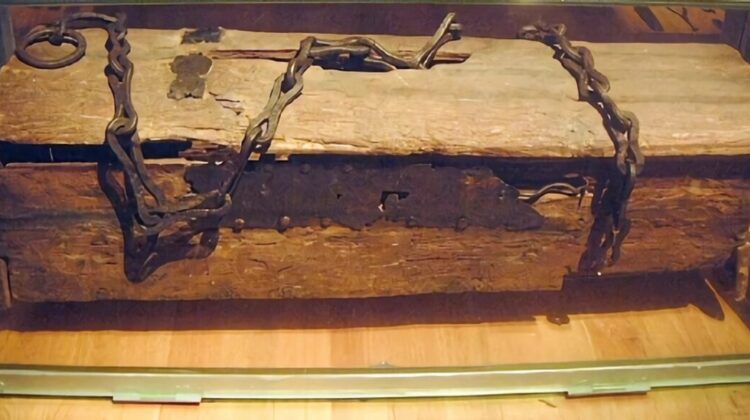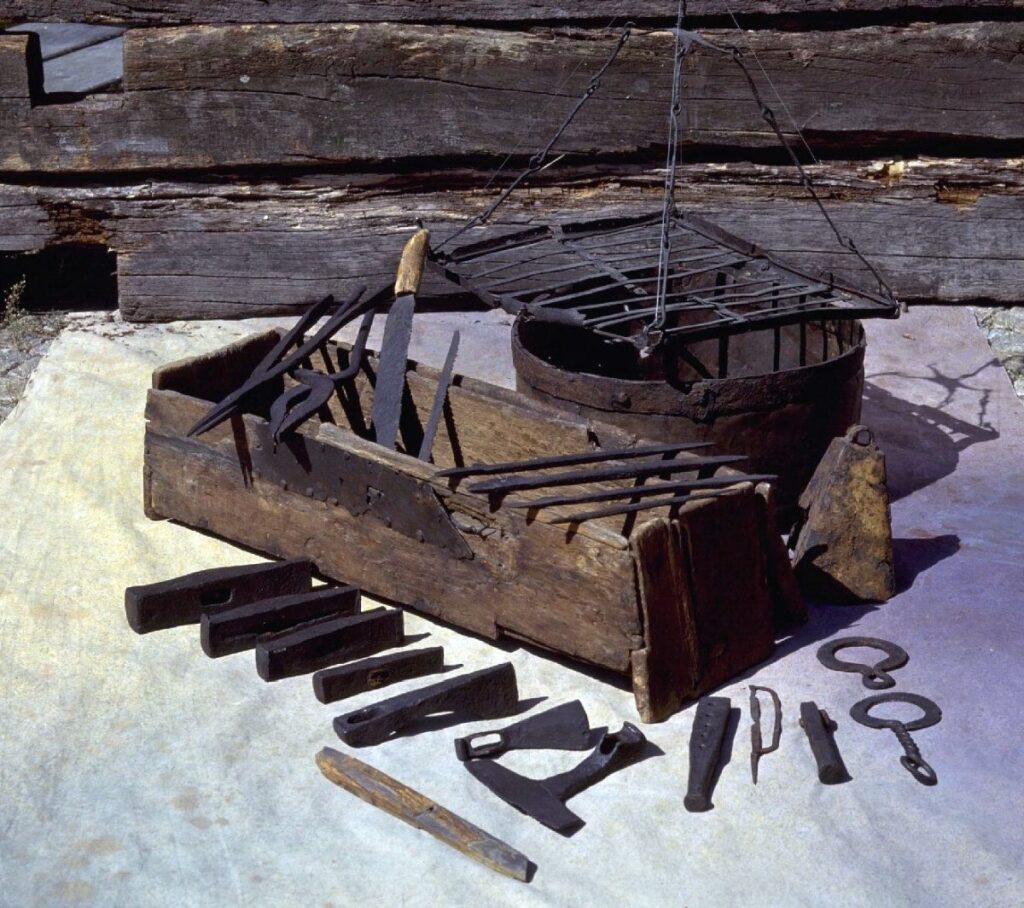
In 1936, a farmer named Hugo Kraft stumbled upon a peculiar chest while working on his field in present-day Sweden. The chest, which was enclosed by an iron chain and had been lost by a Viking craftsman over a thousand years ago, yielded an impressive collection of tools from the Viking Age. The collection included hammers, axes, saw blades, knives, tongs, punches, plate shears, files, rasps, drills, chisels, awls, and whetstones, as well as raw materials, scrap iron, and a variety of finished objects such as locks, keys, a frying pan, cauldrons, and bells.

The chest’s 200 items provide a remarkable testament to the Viking Age and its skilled craftsmen, who were skilled in blacksmithing, carpentry, locksmithing, coppersmithing, and coopering. Despite being over a millennium old, the tools from the Viking Age have a striking resemblance to contemporary tools in terms of their composition, design, and utility. This is no coincidence, as the early Roman tools that spread throughout Europe during the Roman Empire’s expansion heavily influenced Viking tool design.

The chest and its contents were found in Mästermyr mire on the island of Gotland, which was a lake during the Viking Age. It is believed that the chest and its accompanying items may have been placed on a boat that capsized and sank in the lake, but another hypothesis proposes that it was temporarily hidden along the water’s edge.

The discovery of these tools provides a unique glimpse into the life of a traveling craftsman during the Viking Age, highlighting the era’s impressive craftsmanship and the far-reaching influence of the Roman Empire. Despite the devastating loss experienced by the Viking craftsman who lost his equipment during his journey across Lake Mästermyr, his tools have continued to provide valuable insights into the history and culture of the Viking Age.


Leave a Reply